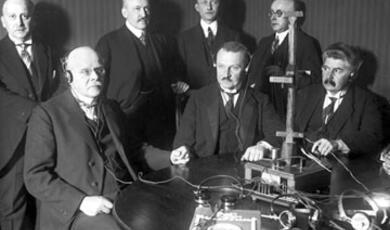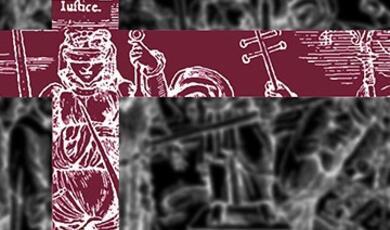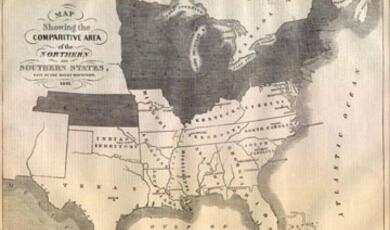06 May 2014
The Gresham Ship:
An Armed Elizabethan Merchantman recovered from the Thames
Dr Gustav Milne
For most people, 16th-century nautical archaeology is synonymous with the Mary Rose, the warship that sank in battle in 1545, was raised from the depths of the Solent in 1982, and is now proudly displayed in Portsmouth (Marsden 2003). She is a superb example of a custom-built warship, and the stunning range of finds recovered from her provide a remarkable window into the lives of her crew. But she was not a typical vessel of that age. If you wish to understand the development of ships, shipping and maritime culture in the Tudor period (a dynamic age of exploration, privateering and overseas trade), then it is the hard-working merchant vessels that we should be studying. The opportunity to undertake just such a research programme is the focus of this paper, with the Gresham Ship Project. This concerns a robust, armed Elizabethan merchantman built in about AD 1574 that sank in the Thames Estuary a generation later. In 2003-4, substantial fragments of the hull were recovered from the Princes Channel (midway between Margate and Southend) and these and material retrieved from the sea bed have now been studied. The research programme was conducted as a collaborative partnership between University College London and the University of Southern Denmark, with funding from the Port of London Authority and from Gresham College, supported by many bodies including the Nautical Archaeology Society, English Heritage and the Museum of London.
Salvage Operation
The investigation of the “Gresham Ship” began in 1846, when a protracted underwater excavation took place in the Thames Estuary. This pioneering project utilised hard-hat dive technology, newly developed at ports such as Whitstable by the enterprising Deane brothers, Charles and John. The new methodology had been put to work in Portsmouth in the 1840’s, clearing wrecks such as HMS Royal George and even Henry VIII’s flagship the Mary Rose, tasks for which explosives were also utilised (Rule 1982, 42-7).
The focus in the Thames estuary was another Tudor shipwreck, the aim being simply to salvage as much of its valuable metal cargo as possible. A contemporary comment noted
"It had been known long since there was a wreck on the Girdler Sand (off Herne Bay) but no one took any notice of it, not knowing what wreck it was, until this spring when divers went down and examined and recovered some iron guns, of very ancient date, also some of those curious ingots and some iron, lead in pigs and red lead in cast iron casks, covered with wood. …. At the date of this letter, the operations were being conducted under the orders of the Duke of Wellington, as Lord Warden of the Cinque Ports, and the men had then recovered about 2,700 of the ingots, and more iron, pig lead, red lead, together with some stone shot.”
The historic significance of the discovery was not completely overlooked, however, for at a meeting of the British Archaeological Association in December 1846, a handful of items recovered from the wreck were discussed. They included a tin ingot stamped with the royal mark (a rose surmounted by a crown); a knife with a double fleur-de-lis stamped on the blade; a round-toed leather shoe and a silk doublet of late 16th-century type (Journal British Archaeological Association, 1847, vol II, 361-2).
Provisional assessment of the material recovered therefore suggested an Elizabethan date for the ship. However, once sufficient metalwork had been recovered and recycled, interest in the site waned and the precise location lost.
Rescue Archaeology
But when the Port of London Authority (PLA) began clearance work in the Princes Channel in 2003, to facilitate the passage of modern shipping in the Thames, the remains of the 16th-century ship were dramatically rediscovered. The site lay some 11km NNW of Whitstable on the Kent coast and 22km SE off Southend (Essex). A second underwater excavation project then began, but this time, 150 years later, with rather different aims, technologies and no explosives. Maritime archaeologists from Wessex Archaeology led by Jens Auer (now Assistant Professor of Archaeology at the University of Southern Denmark) were called in to evaluate the site. Working in very difficult conditions in the open sea and with very poor visibility, the team plotted the position of hull fragments and the associated artefacts. Iron bars, ingots of lead and tin, pottery and leather were also recovered, together with four guns.
One of the iron guns had the ‘TG’ insignia on the barrel as well as the moulded emblem of a grasshopper. This is the mark of Sir Thomas Gresham (1519-1579), the famous London financier, merchant and gunfounder. The gun is a rare example of an English saker, presumably made at Gresham’s foundry in Mayfield, Kent, which was in operation from 1567. Further confirmation of an Elizabethan date for the ship was provided by Nigel Nayling’s assessment of twelve dendrochronological samples from the hull, suggesting that the timbers were felled in England (probably in Essex or East Anglia) in or shortly after 1574 (Auer & Frith 2007).
Once the fieldwork in the Thames estuary was complete, five substantial sections of the carvel-built hull were raised from the sea bed. They represented a c.5m section of the bow, and a c.15m length of part of port side of the vessel from the keel to the level of the orlop deck, and included elements of two gunports. The remains were initially transported to Denton Wharf (Gravesend) where further recording took place. After that, the hull remains were transported across country by road to Portsmouth, for temporary wet storage in a brackish water lake owned by the Ministry of Defence in Horsea, Hampshire. Deliberations then began as to how such an important but unexpected find should be dealt with.
Research Archaeology
Appreciating the unique significance of the discovery for nautical archaeology as well as for London and the long history of its port, the PLA generously agreed to support an innovative five-year research programme coordinated by University College London. Studies of the hull and the ships contents were to be integrated into graduate teaching and dissertation programmes, so that graduate students would be provided with real, relevant hands-on experience to complement and extend their lecture-based studies. UCL was selected as the host, given the Institute of Archaeology’s long association with maritime archaeology, with the Nautical Archaeology Society, and with the study of London.
Work commenced in 2007, and a steering group was set up to oversee the programme, chaired by Professor Clive Orton, with Gustav Milne and Dean Sully as project managers for UCL, and Jens Auer from the University of Southern Denmark. There was representation from the PLA (Gill Andrews), the Receiver of Wreck (Alison Kentuck), the Nautical Archaeology Society (Mark Beattie Edwards), the Museum of London (Hazel Forsyth and Roy Stephenson), the Royal Armouries (Phil Magrath) and Gresham College (Geoff Pavitt).
With generous support from Gresham College (the London institution founded as a bequest in the will of Thomas Gresham), a series of public lectures on aspects of the Tudor Port of London began in 2008, together with a full-day conference in the Museum of London in Docklands in May 2009, and a further lecture in May 2014. This series was supported by a major display put together by a team of UCL’s Museum Studies graduates, under the direction of Theano Moussouri and Ian Carroll, but led by Victoria Kinahan, with additional funding from the Mercers’ Company.
a) Hull studies
Research on the detailed records of the five substantial sections of the vessel itself were conducted at the University of Southern Denmark, using computers and 1:10 scale models, through a series of graduate projects supervised by Jens Auer. These studies show that the vessel was of about 160 tons, 24.5m in length, with a keel length19m long, and an internal width (beam) of 7.4m. The hold was some 3.4m deep, and the carvel-built hull was strongly framed, furnished with integral gunports. It seems clear that the vessel was reworked during its initial construction to increase the beam and capacity of the hull, a process later referred to as “furring”: this is the first time such a procedure has been identified archaeologically.
Although the largest vessels of this period were twice this size, the Gresham Ship would not have been considered as a small ship: it was the broadly the same size as the “Golden Hind”, which successfully circumnavigated the globe in 1577-80, for example. It is known that at least fifteen vessels of a similar size were built in London and the East coast region from 1574-7 (Dietz 1991, 5-20). and thus our ship should be seen as a typical, robust, capacious, armed merchantman of this era. Such vessels were clearly capable of voyaging very long distances.
Since gunports had been deliberately built into the primary design of the hull, it was anticipated that such long voyages would involve belligerent activity of a defensive or offensive nature (or indeed both). Piracy on the high seas was a contemporary fact of life, and merchantmen, whether sailing singly or in convoy, had to be prepared for all eventualities. The guns recovered from the wreck are currently in the care of the Royal Armouries at Fort Nelson, undergoing a long desalination treatment supervised by their curator, Phil Magrath.
b) Conservation studies
The majority of the finds assemblage was transferred to UCL in April 2009 from the English Heritage facility at Fort Cumberland, Hampshire. Extensive deposits had developed around artefacts on the sea bed, aptly termed concretions, and these masked the true nature of the items retrieved from the sea bed. Initially the work therefore focused on “investigative conservation” (physically removing the hard shell) to reveal the contents of twenty-two marine concretions. This was followed by the stabilisation of the recovered artefacts, work that was supervised by Dean Sully, with notable contributions by Kelly Domoney, Libby McCormick and other UCL graduates working in the Conservation Laboratries. One of the largest concretions contained a powder chamber, representing an additional gun, while painstaking work on another concretion revealed part of a wooden gun carriage. Other significant (but rather smaller) finds that have now been cleaned, processed and conserved include ceramics, a pewter salt holder, a silver spoon, a copper alloy dish. Organic materials such as leather have also recorded, including part of a seaman’s boot, perhaps hurriedly kicked off as its owner struggled to leave the sinking ship.
c) Cargo
Professor Marcos Martinon Torres supervised the analysis of the metal cargo. Two types of bar iron were recovered, one folded once, the other folded four times, which would form a bar some 6m in total length. The manganese content of some of these bars suggests they may have originated in the Rhineland. This particular type of bar iron, which is folded so as to be transportable by packhorse, is sometimes referred to as “voyage iron” or “slave iron”, since it was used as currency exchanged for slaves from West African coast in the 17th century. The stamped lead ingots were boat-shaped and measured 600 x 220 x 120mm, each weighing c.56kg, while the tin ingots were 520 x 18mm. The isotopic signature suggests the tin is most likely of British origin, as is that for the lead ingots.
It seems unlikely that the Rhenish bar iron was being imported directly to England (which had its own rich deposits of iron ore) and thus presumably had taken that consignment of bar iron on board specifically for re-export, together with the other British metal ingots. The composition of the cargo thus implies that the vessel was fully laden on an outward-bound voyage from London to a distant destination, not a simple short-haul channel crossing.
The Gresham Ship
The results of the five-year collaborative research programme are being brought together in two volumes, to be published in the Nautical Archaeology Society’s monograph series in 2014. The first volume deals with the vessel itself, the second considers its contents and sets the discoveries in a wider context. The Gresham Ship Project’s studies have thrown new light on ship-building and gun founding, on traffic and trade, and on the port of London in the late 16th century. This was a ‘golden age’ of English sea-faring, when the likes of Drake, Raleigh and Frobisher dominated the stage. This was a time when armed merchantman like the Gresham Ship robustly pioneered new trade routes, reflected in the establishment of trading organizations such as the Muscovy Company (1555), Eastland Company (1579), Levant Company (1581), Barbary Company (1585), East India Company (1600) and the Virginia Company (1606). It was those same armed merchantmen that were used to explore new worlds from North America to India, with the Golden Hinde circumnavigating the globe (1577-80) for example. These armed vessels also conducting profitable “privateering” campaigns, and were often requisitioned by the Crown for military duties, most famously for taking on the Spanish Armada. For good or for ill, such ships and their redoubtable crews were the making of Elizabethan England.
Study of the Turkey and Levant Company records together with other contemporary sources provides an economic, political and a social context for late 16th or early 17th-century merchant shipping. Vessels of the size of the Gresham Ship were the backbone of the company’s operations. The first Charter of the Turkey Company dates to 1581, and the first charter of the Venice Company to 1583, which finally led to the founding of the Levant Company in 1592. A review of the company’s activities from about 1585 to 1590 notes that their fleet initially comprised some nineteen ships, which between them made twenty-seven voyages, using a combined crew of 787 men (an average of about forty per ship). The customs duties alone paid over this period was some £11,359 6s, suggesting that the trade was extensive and presumably very profitable (Epstein, 1908).
The cargoes carried invariably included cloth (mostly purple or red), but other common commodities were tin, lead and furs. Impositions charged on 87 categories of goods imported into Turkey since at least the early 17th century included iron, at 2 shillings per ton; lead at 1s 6d per fother (= 19 1/2 cwt) red lead, at 3d per hundred, and tin at 1s per hundred (Epstein, 1908: 232-6): the cargo carried by the Gresham ship would thus not have been out of place here. It is perhaps of some significance to note that, in a letter illustrating typical charges levied on the Levant Company, the two commodities exported in bulk used as examples were Kersies (cloth) and tin, the latter purchased by the 10 thousand-weight (Epstein, 1908: 262-3).Certainly the London customs record for 1560 show that the iron was also a major commodity there (presumably brought in for re-export): it was ranked in the top ten in terms of cost, below linen, fustians, canvas, woad and various wines (Dietz, 1972: 152-3).
An example of the eventful life such ships could experience is shown by the biography of a 16th-century merchantman called the Cherabin (or Cherabim or Cherubim). Since a vessel of that name (or a version of it) is listed in the records of the Levant Company in 1590 and in 1600 (as well as in an unspecifically-dated record in between), she must have worked as a Levanter for at least part of her life. Her tonnage was noted as being between 200 and 220 tons burden, and her crew also varied, from 44 to 50 (Epstein, 1908: 220, 222, and 224). She thus worked alongside such famous stalwarts of the Turkey trade as the Merchant Royal, the Edward Bonaventure and the Hercules, ships that also temporarily joined the Queen’s Navy in the victorious defeat of the Spanish Armada in 1588.
A ship called the Cherabin was supplied with two new guns (sakers) in London in 1590, and thus was clearly armed. The guns were purchased for her by a merchant called Edward Johnson from the dealer John Chapman, a prominent figure in the London gun trade The transaction is recorded in the bonds issued that year for guns sold in London to merchantman: interestingly, Chapman was also responsible that year for the sale of six falcons to another Levanter, the 300-ton Suzanne.
A use for her armaments is recorded in 1591, when a London ship called the Cherubim was working with Robert Flick’s 300t Susan (or Suzanne?), part of the London squadron sent to reinforce Lord Thomas Howard’s fleet in the Azores. This was privateering enterprise, in which English ships tried to capture Spanish vessels and their cargoes heading back to Europe, fully-laden from the West Indies. The Cherubim proved a success as a privateer, since the High Court of Admiralty papers show that she brought home £2000-worth unspecified ‘treasure’, as well as sugar, hides, ginger, sarsaparilla, brazilwood and other goods (Andrews, 1964: 243). The vessel is listed as back working with the Levant Company in 1600 (Epstein, 1908: 204).
The master of the Cherabin was one Thomas Smith and in 1603 he brought a case to court following that ship’s loss in the Thames Estuary in a storm. According to his argument, Trinity House had failed to maintain the correct number of markers to delineate the deeper channel: where there should have been two, there was only one. His detailed account states that he
“….departed downe the River of Thames with the said ship and her ladinge aboute Michelmas last and passed safely through the ffishers Depes and over the Flattes until he came nere a sand called the Last, and perceavinge that there was but only one buoy there, and that the other buoy and beacon which ought to be there were wantinge, he, the said Thomas Smith, fearinge danger for that his ship was depe laden, cast two ankers there, further with his boate and sounded where the water was deepest determininge to bring the ship into the depe water againe & so sett saile & be gon”.
“And as he and his company were thus labouring, there arose a storme and by the force thereof the ankers came home, and the forecastle being sett was blowen out of the boltrops & the rudder was strucken away and so the ship was cast away with her whole ladinge by reason of the said storme and the wante of the said beacon and buoy ffor as he sayth if the said beacon & buoy had byn there as they ought to have byn, to directe where the depe water was, the ship had passed that danger before the storme had come”
(Harris, 1969: 169-70).
Thus, for want of a beacon, a fully-laden merchantman was lost, right at the start of her outward bound voyage, before she had made the open sea. A sudden violent storm broke off her rudder and ripped off her sails, causing her to drift helplessly until she sank.
She was by no means the first or indeed the last ship to suffer such a fate just a day’s sailing from London. She shared precisely the same end as the Gresham Ship: indeed, although it cannot be proved, the Cherabin might just be the real name of our merchantman. She too was a heavily-laden trader armed with sakers, on an outward bound voyage. She seems to have lost her rudder before she sank, since no trace of such was found in the immediate vicinity, perhaps affording an explanation for the slightly unusual orientation the wreck occupied on the sea bed.
There can be no absolute certainty attached to the claim, but if it were true, then Thomas Smith of London may have been the last master of the Gresham Ship. It certainly was of the right size, and right age, was armed and was fully-laden with an outward-bound cargo, and met her fate in a similar location. And if the Gresham Ship were the Cherabin (and if she was also known as Cherabim/Cherubim) then she had journeyed great distances in her time, before her adventurous life was wrecked ironically so close to home by a missing buoy and a rising storm. As such she epitomized the life of such an armed merchantmen and her crew, as well as the perils they daily faced.
Postscript
In May 2012, the five sections of the hull were individually craned out of Horsea Lake and transported overland from Hampshire to Leicestershire, to become a major exhibit in the National Dive Centre at Stoney Cove. This complex operation was directed by Mark Beatie-Edwards for Nautical Archaeology Society and by Martin Woodward for the NDC. This major move ensures that the remains will be in a secure but accessible location, forming part of a major new heritage attraction for which underwater diver trails are being developed. The Gresham Ship is thus now on public display, albeit 6m underwater, where the unique Elizabethan exhibit will be enjoyed by the c.30,000 divers of all ages who use the centre every year. The reconfigured “wreck site” will also be used by the Nautical Archaeological Society to inspire and train the next generation of maritime archaeologists.
The finds from the ship are now being transferred to the care of the Southend Museum Service. They will ultimately be displayed in a purpose-built gallery with a theme focussed on wrecks from the Thames, appropriately in a brand new museum building overlooking the estuary from whence the Gresham Ship was recovered. Although that lies some years in the future, a temporary exhibition that featured some of the Gresham’s artefacts was presented in the Central Museum at Southend, from June-October 2012.
Acknowledgements
The Gresham Ship Project team warmly acknowledges the help of many institutions and individuals (regrettably there is not space here to mention them all). First and foremost must be the Port of London Authority who supported the project from the outset, and Tony Firth and Jens Auer’s team from Wessex Archaeology who recorded and recovered the wreck and its contents in far from ideal conditions in the Thames Estuary. Further welcome support was provided by Geoff Pavitt, Barbara Anderson and Valerie Shrimplin from Gresham College, from the Mercers’ Company, from the English Heritage team at Fort Cumberland (Hampshire) and the Royal Armouries based in the neighbouring Fort Nelson, as well as staff from the Museum of London, the LAARC and the Museum in Docklands. The later stages of the project relied on the National Dive Centre’s Martin Woodward and (not for the first time) the Nautical Archaeological Society’s expertise to oversee the moving of the hull timbers from Horsea to their new home in Stoney Cove, while thanks are also due to Clare Hunt and Ken Crowe from Southend Museum Service for accommodating the artefacts from the site. The research project would not have progressed without the generous spirit of the staff at the University of Southern Denmark and at University College London or without the facilities those institutions provided: but most of all it relied on the professionalism and dedication of their talented graduate students. This paper is a revised and updated version of the summary reports published in the London Archaeologist (Milne 2013) and in Archaeology International (Milne, Sully & Auer 2013), in which those graduate study reports are all listed.
Bibliography
Andrews, K, 1964, Elizabethan Privateering during the Spanish War 1585-1603. Cambridge
Auer, J & Frith, A, 2007 “The Gresham Ship: an interim report on a 16th-century wreck from the
Princes Channel, Thames Estuary”, Journal of Post Medieval Archaeology 41/2, 222-241
Dietz, B, 1972, The Port of Trade of Early Elizabethan London, London Record Society 8.
Dietz, B, 1991, “The Royal Bounty and English Shipping in the 16th and 17th centuries”,
Mariners Mirror, 77: 5-20
Epstein, M, 1908, The Early History of the Levant Company. London.
Harris, G., 1969, The Trinity House of Deptford 1514-1660. London.
Journal British Archaeological Association, 1847 vol II, 361-2
Marsden, P (ed), 2003, Sealed by Time: the loss and recovery of the Mary Rose. Portsmouth
Milne, G, 2013, “London’s Elizabethan Shipwreck: the Gresham Ship Project 2007-2012”,
London Archaeologist, 13 no 7: 171-174.
Milne, G, Sully, & Auer, J, 2013 “Researching and Elizabethan Shipwreck: the Gresham Ship Project 2007-2012”, Archaeology International 15: 57-61.
Rule, M, 1982, The Mary Rose. London
© Dr Gustav Milne, 2014


 Login
Login







